Altcoin
Sonic Surges to $1 Billion TVL in 66 Days Amid DeFi Market Slump

The crypto market in 2025 is facing intense turbulence. The capitalization of once-hot trends like meme coins has plummeted. Capital has flowed out of decentralized finance (DeFi) protocols, driving DeFi’s total value locked (TVL) down from $120 billion to around $87 billion.
In this context, Sonic stands out. It has consistently hit new TVL highs, reaching $1 billion in April after growing nearly 40 times since the beginning of the year. So, what makes Sonic a bright spot amid a stormy market?
Investors Are Pouring Capital into Sonic
Sonic has made its mark with a rapid TVL growth rate, far outpacing better-known blockchains. According to DefiLlama, Sonic reached $1 billion in TVL within 66 days. In comparison, Sui took 505 days, and Aptos needed 709.
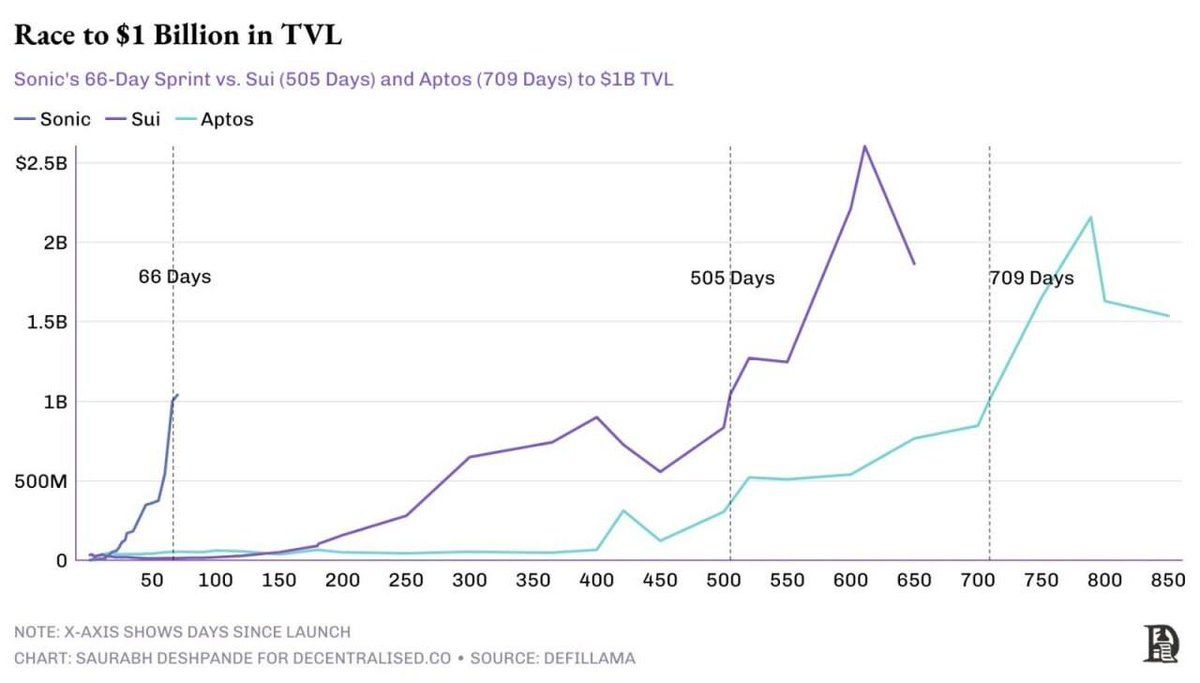
This achievement reflects strong capital inflows into the Sonic ecosystem despite the broader DeFi trend of capital withdrawal. Data from Artemis supports this, ranking Sonic as the second-highest netflow protocol this year—trailing only Base, a blockchain backed by Coinbase.
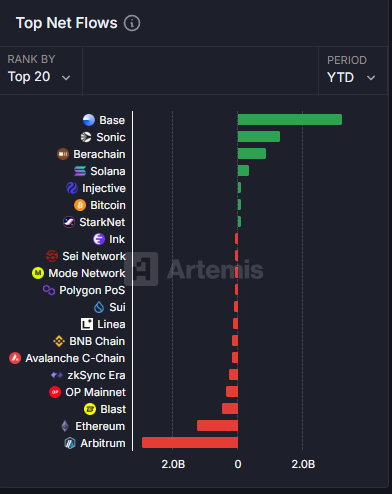
The growth goes beyond TVL numbers. Sonic’s ecosystem is attracting various projects, including derivatives exchanges like Aark Digital and Shadow Exchange and protocols such as Snake Finance, Equalizer0x, and Beets. These projects still have small TVLs, but they have the potential to draw new users and capital, fueling Sonic’s momentum.
However, the question remains: Can this capital inflow remain sustainable while the market fluctuates?
Andre Cronje on Sonic’s Potential and Strengths
Andre Cronje, the developer behind Sonic, shared his ambition in an interview to push this blockchain beyond its competitors.
“Sonic has sub-200 millisecond finality, faster than human responsiveness,” Andre Cronje said.
According to Cronje, Sonic isn’t just about speed. The platform also focuses on improving both user and developer experience. He explained that 90% of transaction fees go to dApp, not to validators, creating incentives for developers to build.
Unlike other blockchains, such as Ethereum, which are limited by long block times, Sonic leverages an enhanced virtual machine that theoretically processes up to 400,000 transactions per second. Cronje acknowledges, however, that current demand has yet to push the network to its full capacity. Still, these technical advantages make Sonic a compelling option for developers seeking more user-friendly dApps.
He also revealed new features on Sonic that have the potential to attract users.
“If your first touch point with a user is to download this wallet and then buy this token on an exchange, you’ve lost 99.9% of your users. They’ll use their Google off-email password, fingerprint, face, whatever it is, to access the dApp and interact with it, and they’ll never need to know about Sonic or token,” Andre Cronje revealed.
Risks and Challenges Ahead
Despite reaching impressive milestones, Sonic is not immune to risk. The price of its token, S, has declined significantly from its peak. According to BeInCrypto, it has dropped around 20% in the past month—from $0.60 down to $0.47—mirroring the broader market’s volatility.

Furthermore, Grayscale recently removed Sonic from its April asset consideration list. This decision reflects a shift in the fund’s expectations and raises concerns about Sonic’s ability to maintain its TVL should investor sentiment deteriorate.
Sonic also faces fierce competition from other high-performance chains like Solana and Base. Although Sonic holds a clear advantage in speed, long-term user adoption will depend on whether its ecosystem can deliver real value, not just high TVL figures.
Disclaimer
In adherence to the Trust Project guidelines, BeInCrypto is committed to unbiased, transparent reporting. This news article aims to provide accurate, timely information. However, readers are advised to verify facts independently and consult with a professional before making any decisions based on this content. Please note that our Terms and Conditions, Privacy Policy, and Disclaimers have been updated.
Altcoin
Bitcoin Analyst Says Shiba Inu Price Is Not Hitting $1, Here’s Why


A recent analysis by a Bitcoin analyst has thrown cold water on the possibility of the Shiba Inu price hitting the $1 mark. The analyst firmly dismissed the idea, suggesting that it is highly unlikely, if not downright impossible.
Why Shiba Inu Price Will Never Hit $1
Davinci Jeremie, a prominent Bitcoin analyst with over 825,700 followers on X (formerly Twitter) has declared the Shiba Inu price will never reach $1. To understand why the analyst has made such a grim prediction, he points to Shiba Inu’s market capitalization and supply dynamics.
With Shiba Inu’s vast circulating supply, Jeremie argues that reaching $1 would require an astronomical market cap far beyond what the crypto market could sustain. As of April 2025, the total circulating supply of SHIB is around 589.5 trillion. However, this number fluctuates with daily token burns.
For Shiba Inu to hit $1, Jeremie has stated that its market capitalization would need to surge to a staggering $600 trillion. To put the sheer scale of this figure into perspective, a comparison between Bitcoin, gold, and the global crypto market cap helps illustrate just how unrealistic this milestone is.
Currently, Bitcoin, the world’s largest cryptocurrency by market cap, is worth around $1.66 trillion. For Shiba Inu to achieve a $1 price point, it would need to surpass almost 600 times the total market cap of Bitcoin.
Gold, which is widely regarded as a reliable store of value and has a market cap of approximately $21.857 trillion, would still be significantly dwarfed by the required market cap for SHIB at $1. To put it simply, Shiba Inu reaching this figure would need a valuation nearly 300 times greater than the entire global crypto market cap, which currently sits around $2.65 trillion.
As mentioned earlier, Shiba Inu’s massive supply also significantly contributes to why a $1 price is unrealistic. While cryptocurrencies like Bitcoin have a capped supply, SHIB’s is exponentially larger, created to appeal to its community.
The sheer number of tokens in circulation is part of what keeps SHIB’s current price so low at $0.000012. It also makes it virtually impossible to reach $1 unless drastic changes are made to supply or token burns skyrocket astronomically.
Community Acknowledges SHIB’s $1 Pipe Dream
Following Jeremie’s declaration that Shiba Inu is unlikely ever to hit $1, many in the crypto community echoed his sentiment, emphasizing just how unrealistic and ambitious this target is. While many concluded that Shiba Inu cannot reach $1, others offered potential solutions they believe could one day turn this far-fetched goal into a reality.
One member highlighted the need to reduce Shiba Inu’s supply. Primarily, this would involve token burns, which permanently remove tokens from circulation. Since its inception, over 410.7 trillion SHIB tokens have been burnt. However, despite this progress, the circulating supply remains overwhelmingly large.
Featured image from Pixabay, chart from TradingView

Editorial Process for bitcoinist is centered on delivering thoroughly researched, accurate, and unbiased content. We uphold strict sourcing standards, and each page undergoes diligent review by our team of top technology experts and seasoned editors. This process ensures the integrity, relevance, and value of our content for our readers.
Altcoin
Expert Outlines Reasons Why Avalanche Will Revolutionize Traditional Finance
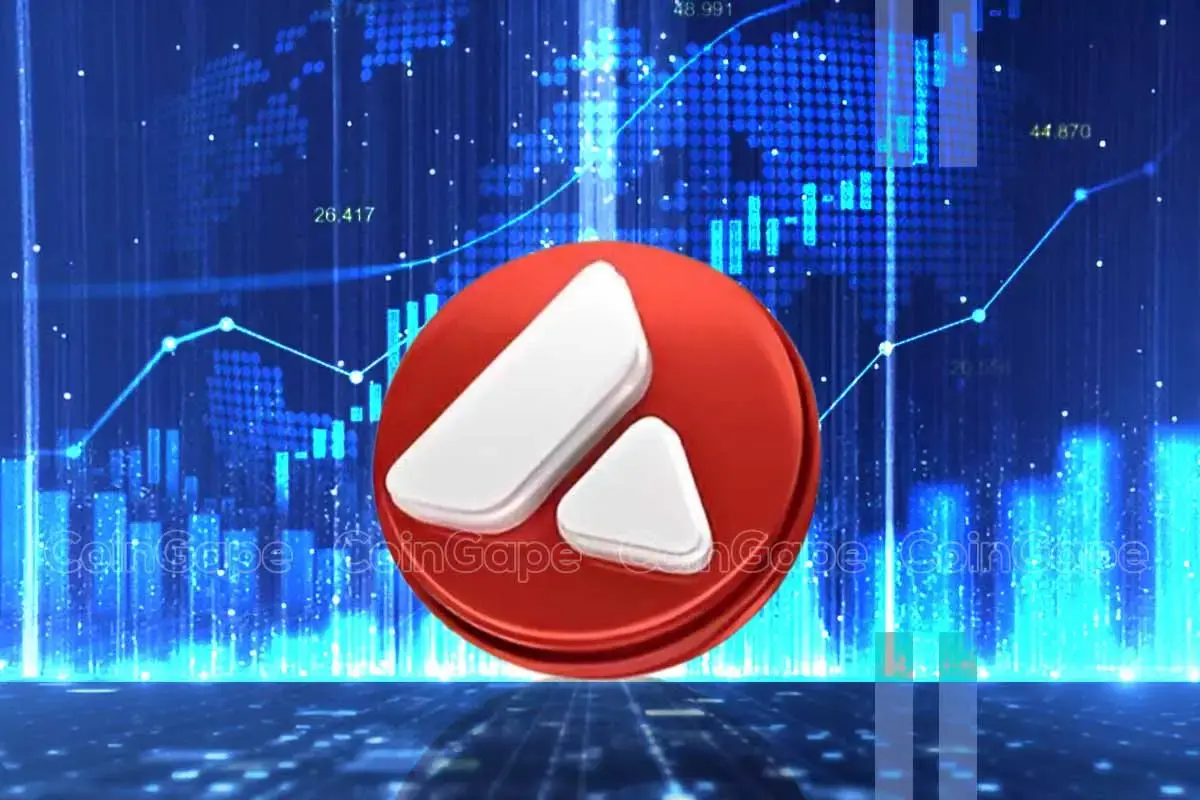
Avalanche (AVAX) is carving a niche as a blockchain network with boundless scalability but one expert is highlighting its real-world use case in finance. Crypto expert Olivia Vande Woude says Avalanche will change the landscape for traditional finance as we know it.
Avalanche Will Modernize Legacy RTGS Systems
According to an X post, business development expert Olivia Vande Woude remarks that Avalanche will improve current offerings for mainstream finance. Right out the bat, Woude notes that the lowest hanging fruit for AVAX will be changing outdated rails in legacy finance.
Woude argues that rather than a wholesale replacement, an Avalanche integration will improve legacy RTGS systems like SWIFT and Fedwire. Perhaps, the biggest area of improvement will be in conventional post-trade infrastructure bogged down by fragmented reconciliation. Woude notes that the network can introduce real-time finality and liquidity efficiency for post-trade infrastructure.
Large exchange infrastructure is tipped to record seismic changes following an Avalanche integration, says Woude. While CBOE and ICE grapple with execution latency, Woud was Avalanche’s decentralization can reduce slippage for legacy exchanges.
“Avalanche does for finance what fiber optics did for telecom,” said Woude. “It’s replacing outdated rails with real-time, high-throughput, low-latency execution.”
Woude points out in her statement that Avalanche’s tamper-proof infrastructure will improve the batch processing systems employed by traditional custodians. The derivatives markets will receive their fair share of changes, leaning on Avalanche’s collateral optimization and margin logic based on advanced smart contracts.
Amid soaring regulatory changes in the US, traditional financial institutions can unlock new revenue streams in tokenization via blockchain-based integrations.
Benefits Extend To Funding Markets Amid Soaring AVAX Price
Woude highlights the benefits of an integration in short-term funding markets by leaning on its dynamic discounting. Furthermore, the blockchain offers programmable yield analytics designed to revolutionize the operations of repo settlements and liquidity management in funding markets.
An EVM compatibility will allow institutions to still deploy Ethereum-based smart contracts, smoothening the curve for tokenized funds. As the US SEC approves options trading for Ethereum spot ETFs, Avalanche can offer financial institutions permission chains for compliance while offering on-chain derivatives mirroring ETF performance.
“Avalanche isn’t just modernizing financial infrastructure, it’s reprogramming it,” said Woude. “Institutions adopting Avalanche in turn gain a meaningful edge in speed, efficiency, and transparency.”
AVAX price has gained nearly 8% over the last day driven by a broader crypto market rebound and rising institutional adoption for Avalanche. AVAX is trading at $20 while daily trading volumes have spiked by 7% buoyed by bullish chatter around the network.
Disclaimer: The presented content may include the personal opinion of the author and is subject to market condition. Do your market research before investing in cryptocurrencies. The author or the publication does not hold any responsibility for your personal financial loss.
Altcoin
Shiba Inu Price on The Verge of Breaking $0.00002
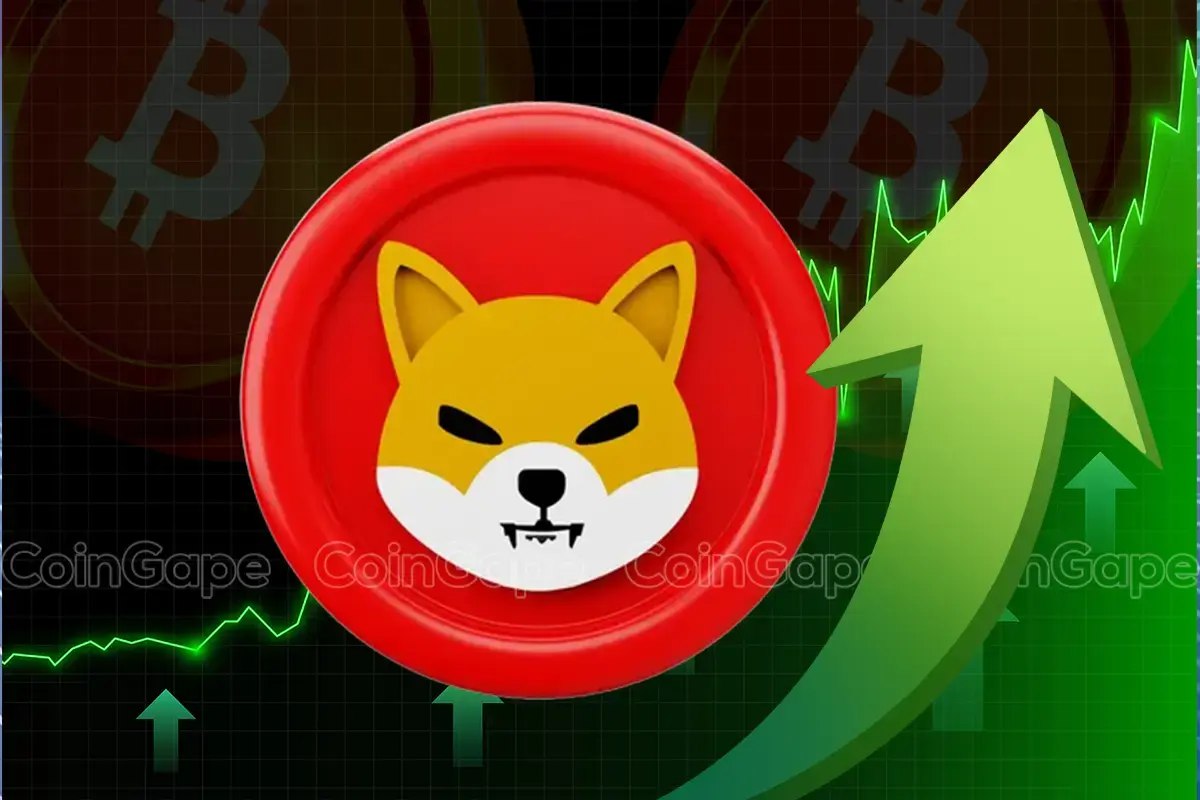
The memecoin ecosystem has joined the latest revival in the broader market, with the Shiba Inu price now in the spotlight. The memecoin has reset its bearish outlook and will break crucial price milestones in the coming days.
For Shiba Inu, the death cross formation was confirmed on April 6 when the price dropped from $0.00001232 to a low of $0.00001030.
Shiba Inu Price Golden Cross Confirmed
Market data shows that the SHIB price is gradually disappearing from its earlier consolidation trend. At the time of writing, the coin’s price was changing hands for $0.00001249, up by 2.14% in 24 hours.
SHIB recovered after trading at a low price of $0.00001205 to a daily high of $0.00001265 before settling at the current level. This price boost comes as the SHIB burn rate jumped 1000% in early trading, setting the memecoin on a possible revival path.


The SHIB/USDT 4h chart confirms a golden cross pattern for the memecoin. This pattern is formed when the short-term Moving Average switches above the longer-term moving average.
Although this pattern is fully formed on the 4-hour chart, it is yet to form on the daily chart. However, with the current momentum, a confirmed breakout is possible. Already, the token has displaced Hedera and now ranks as the 17th largest cryptocurrency.
Shibarium Catalyst for Price Rebound
Different ecosystem factors can boost the price of Shiba Inu in the long term. One of these factors is closely tied to the outlook of Shibarium and its associated Layer-2 scaling solution.
As reported earlier by CoinGape, the Shibarium 200 million addresses milestone is near. If the network attains this landmark, it will show a clear sign of growing adoption, a move that might boost its token valuation.
Already, Shibarium has broken the 1 billion total transaction milestone. Should the Shiba Inu network continue to record organic growth, its chances of outranking Dogecoin is higher.
Amid the ongoing boost, the question remains how high the memecoin could soar. Drawing on this, a potential SHIB retest of its ATH of $0.00008844 is possible moving forward. While it will require as much as a 710% growth from current levels, SHIB can print this uptick, drawing on its historical trend.
Disclaimer: The presented content may include the personal opinion of the author and is subject to market condition. Do your market research before investing in cryptocurrencies. The author or the publication does not hold any responsibility for your personal financial loss.
-

 Altcoin24 hours ago
Altcoin24 hours agoBankless Cofounder David Hoffman Reveals Strategy To Improve Ethereum Price Performance
-

 Market24 hours ago
Market24 hours agoSolana Bulls Lead 17% Recovery, Targeting $138
-
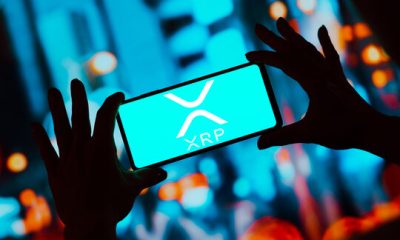
 Market21 hours ago
Market21 hours agoXRP Price To Hit $45? Here’s What Happens If It Mimics 2017 And 2021 Rallies
-

 Ethereum20 hours ago
Ethereum20 hours agoEthereum (ETH) Consolidates Within Tight Range As Key Support Level Forms
-

 Bitcoin19 hours ago
Bitcoin19 hours agoBitcoin Price Volatility Far Lower Than During COVID-19 Crash — What This Means
-

 Ethereum16 hours ago
Ethereum16 hours agoEthereum Slips Below ‘Mayer Multiple’ Level That Preceded Last Rally To $4,000
-

 Bitcoin5 hours ago
Bitcoin5 hours agoCryptoQuant CEO Says Bitcoin Bull Cycle Is Over, Here’s Why
-

 Bitcoin14 hours ago
Bitcoin14 hours agoBitcoin Set For Challenge With Two Major Resistance Zones


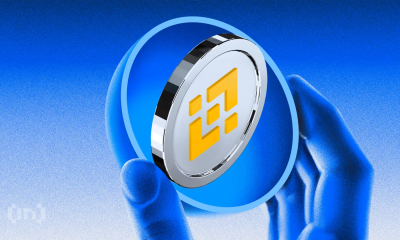



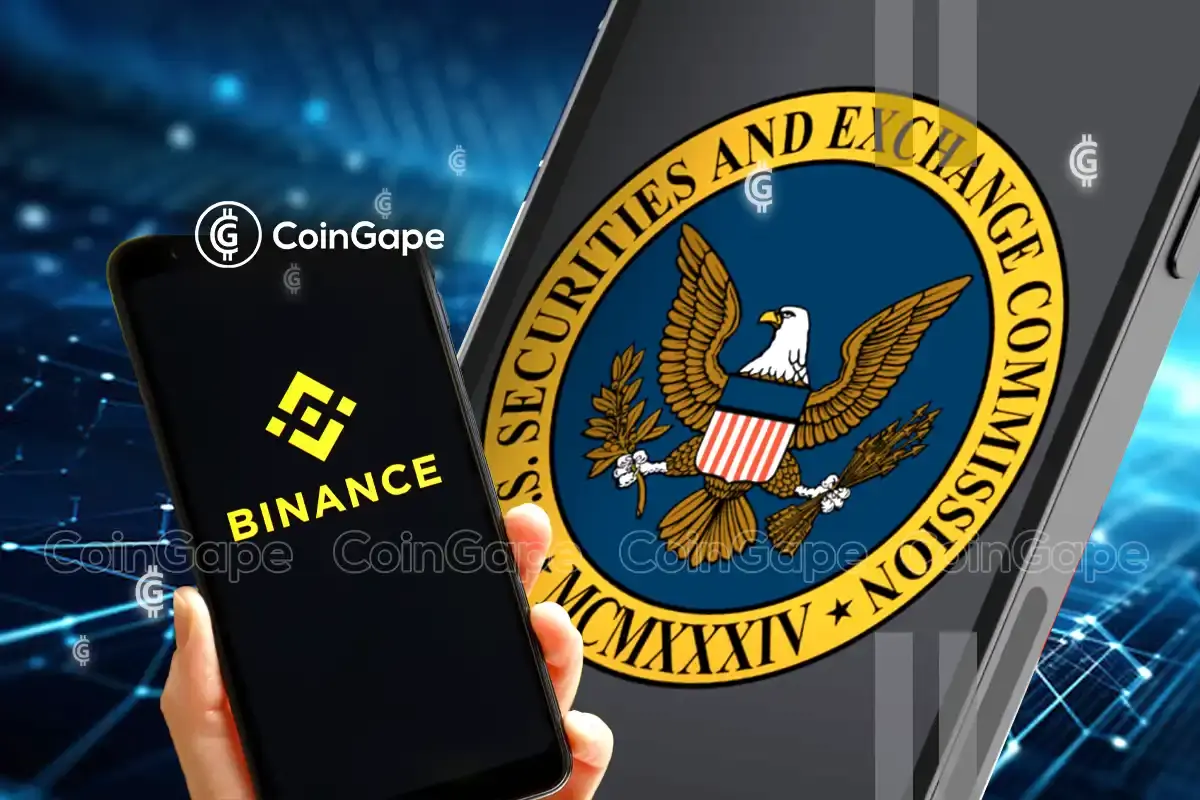
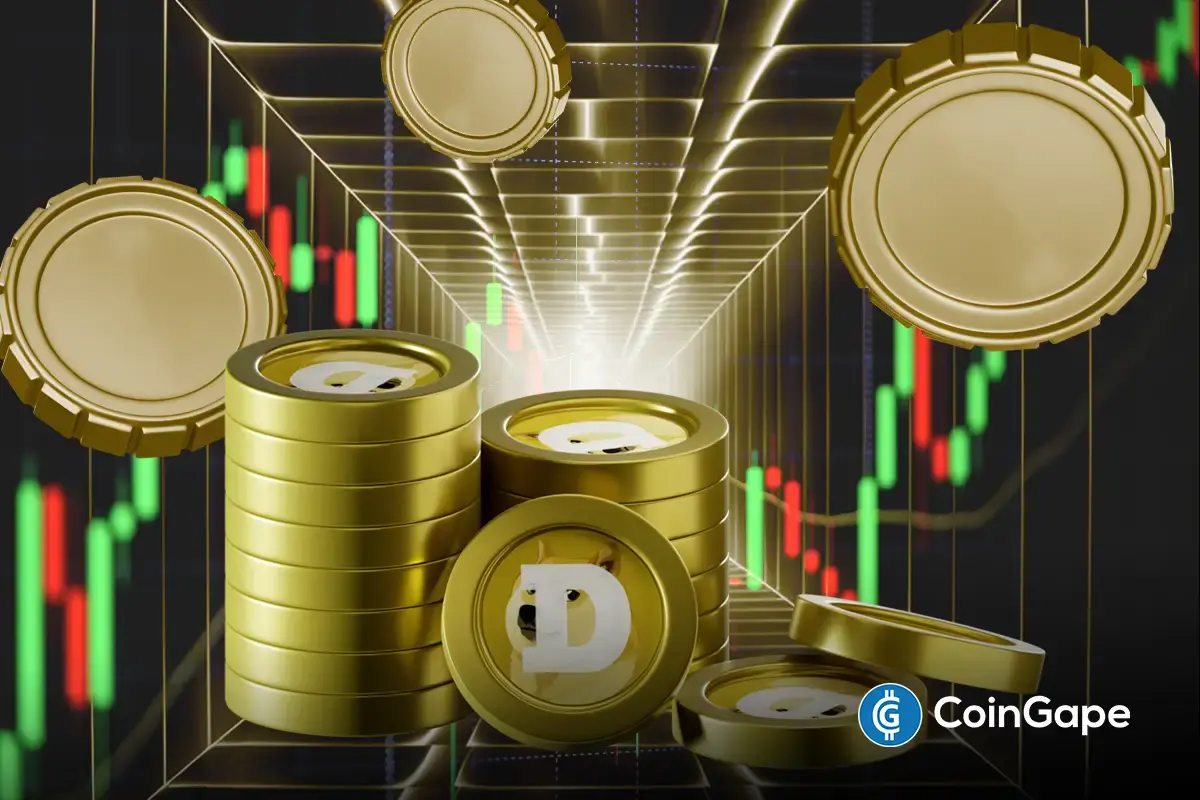
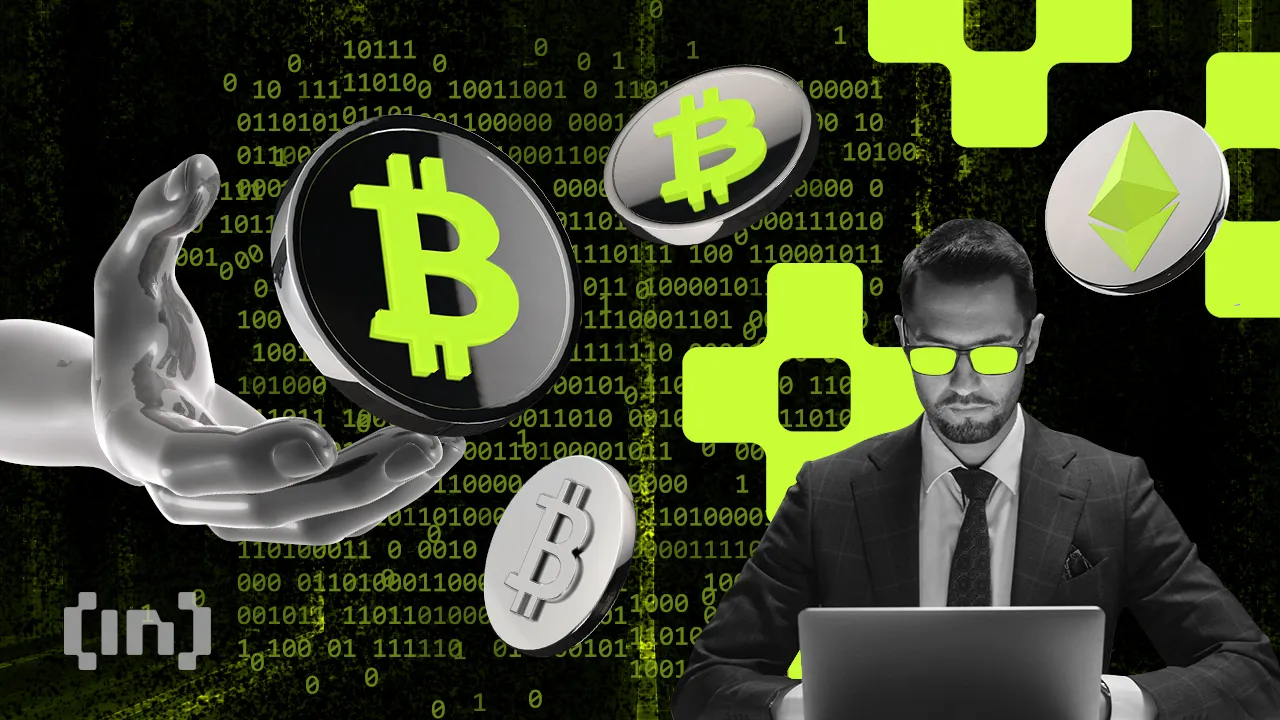












✓ Share: